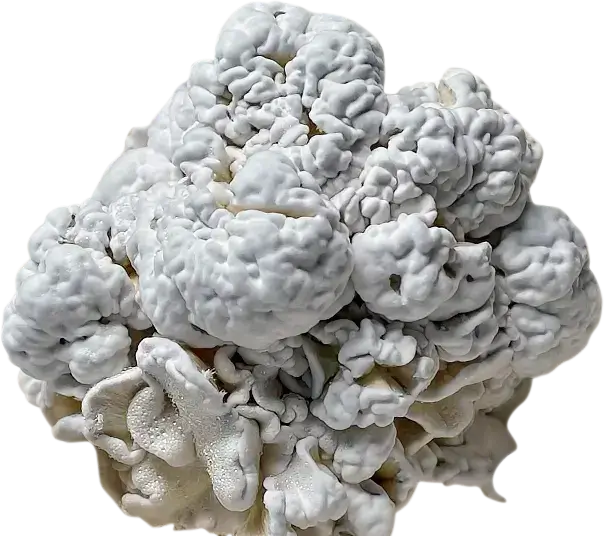Why Sterile Technique Is Non-Negotiable
Whether you’re just starting out with mushroom microscopy or you’re deep into studying spore development, sterile technique is non-negotiable. It’s not just about getting clean results — it’s about avoiding contamination, wasted samples, and spoiled research. And when it comes to mushroom spore syringes or liquid culture syringes, maintaining proper sterility is half the battle to successful cultivation.
In this comprehensive guide, we’ll break down everything you need to know about storing your syringes properly, what to do when they arrive, and how to ensure your microscopy sessions and inoculations go smoothly every time.
Why Syringe Sterility Really Matters
If a spore syringe gets compromised by bacteria or mold spores, you’ll see it — cloudiness, off smells, weird floaters. Contamination doesn’t take much. One wrong breath over an open cap or a dusty storage drawer can turn your whole study into a petri dish of frustration.
Contaminated syringes can lead to:
- Failed inoculations and wasted substrates
- Cross-contamination of your entire grow setup
- Inaccurate microscopy observations
- Lost time and resources
- Potentially harmful bacterial or mold growth
That’s why sterility isn’t just a recommendation — it’s the absolute standard for anyone serious about mushroom cultivation and research.
Best Practices for Storing Syringes
1. Leave Them Sealed Until You’re Ready
Every syringe we send out is packaged to preserve sterility. Keep the cap on tight and don’t break that seal until you’re set up and ready to inoculate your agar or grain. Work in a clean environment like a still air box or in front of a laminar flow hood for optimal results.
2. Cool, Dry, Dark — Your New Storage Mantra
Store your syringes somewhere clean, dry, and out of direct sunlight. A drawer, a clean cabinet, or even a small dedicated storage box works great. You can also store them in the refrigerator. Avoid anywhere hot, damp, or exposed to temperature swings (so, not your windowsill or car glovebox).
Ideal Storage Conditions:
- Temperature: 55–75°F (13–24°C)
- Humidity: Low to moderate
- Light exposure: Minimal to none
- Air circulation: Limited
3. Don’t Freeze — Seriously
Freezing can damage both the syringe and the spores or mycelium inside. If you’re using liquid culture, freezing can destroy living cultures entirely. The expansion of water during freezing can also compromise the sterility of the syringe.
Keep your temperatures stable — somewhere between 55–75°F is ideal for long-term viability of your spores and cultures.
4. Use Airtight Containers for Extra Peace of Mind
Want to go the extra mile? Store your syringes in a small airtight container or zip-sealed bag with a fresh desiccant pack inside. It’s a great way to guard against unexpected humidity and accidental contamination.
Pro Tip: Silica gel packets work wonderfully, but make sure they’re new and haven’t absorbed moisture already. Replace them every few months if storing syringes long-term.
5. Keep Sterile and Used Separate
Once a syringe is used (even once), it shouldn’t go anywhere near your sterile stash. Label your used syringes clearly, store them separately, and always dispose of needles safely in a sharps container if they’re single-use.
Cross-contamination between used and unused syringes is one of the most common mistakes beginners make. Maintain separate storage areas to prevent this issue.
When You Receive Syringes From Atlas Spores
Here’s the thing — even when stored perfectly, the mycelium inside a liquid culture syringe or the spores suspended in a spore solution will settle over time. It’s totally normal and doesn’t indicate any problem with the quality of your purchase.
🧪 Before you use your syringe, give it a gentle shake. This helps redistribute the spores or mycelial strands evenly in the solution, ensuring a balanced inoculation when you inject onto agar or into grain.
Just don’t go Hulk-mode on it. A few steady shakes is all it takes. Excessive agitation can damage mycelium in liquid cultures.
Visual Inspection: Before use, hold your syringe up to a light source. For spore syringes, you should see tiny dark specks (spores) floating in the solution. For liquid culture, you should see white, wispy strands of mycelium. If you see any other colors or cloudiness, this could indicate contamination.
Need clean, ready-to-use syringes for your research? Our spore and liquid culture syringes are prepared in a certified clean room and batch-tested for contamination before they ship.
👉 Browse Our Shop for Sterile Spore Syringes & Liquid Culture
Not sure if you should be using a spore syringe or liquid culture? Learn the pros and cons of each method in our side-by-side comparison:
Spore Syringes vs. Liquid Cultures: Understanding the Basics and Choosing the Right Tool.
Long-Term Storage Solutions
- Refrigeration (Not Freezing): Spore syringes can be refrigerated (never frozen) to extend their shelf life significantly. Most will remain viable for 6–12 months when properly refrigerated at 36–40°F (2–4°C).
- Rotation System: Use the oldest syringes in your collection first. Consider implementing a “first in, first out” system and labeling with dates.
- Regular Inspections: Check your stored syringes monthly for any signs of contamination or pressure buildup inside the syringe.
- Backup Strategy: Consider making spore prints or transfers to agar as backups for your favorite strains rather than relying solely on syringes for long-term storage.
Curious how storage time impacts colonization speed? You’ll want to check out our post on inoculation timelines:
Spore Syringe, Agar, or Liquid Culture? Colonization Times Compared.
Proper Handling Techniques for Maximum Sterility
- Clean Environment: Work in a still air box or in front of a laminar flow hood if possible. At minimum, work in a clean, draft-free room.
- Hand Hygiene: Thoroughly wash hands and wear nitrile gloves if available.
- Alcohol Prep: Wipe down all surfaces with 70% isopropyl alcohol, including the outside of the syringe.
- Flame Sterilization: If using a reusable needle, sterilize it with a flame until red hot, then allow to cool completely before use.
- Fast Work: Minimize the time the needle is exposed to open air.
- Steady Injection: Apply even pressure when injecting solution to prevent splashing or backflow.
Getting your lab setup dialed in? Whether you’re inoculating grain jars or plating spores to agar, start with the highest quality syringes you can trust.
🧪 Visit the Shop – Explore Our Full Syringe Selection
Want a step-by-step walk-through for using your syringe once it’s ready? Read our beginner-friendly guide:
How to Use Spore Syringes and Liquid Culture.
Handling and Disposal Tips
- Never reuse disposable needles or syringes. They’re sterile once. After that, they’re a contamination risk.
- Dispose of sharps safely. If you’re working in a home lab, use a proper sharps container (not a soda bottle — we see you). Many pharmacies offer sharps disposal services.
- Label preloaded syringes. If you prep syringes for later use, label them with the strain, date, and type (LC or spore solution). But ideally? Use them fresh.
- Clean up immediately. After working with syringes, disinfect your workspace thoroughly to prevent any residual contamination.
🛒 Ready to Get Started?
Whether you’re researching under the microscope or prepping jars for colonization, your success starts with sterile, dependable supplies. All orders ship quickly in discreet packaging.
👉 Shop Now – Spore Syringes, Liquid Culture & More
Conclusion: Sterility as the Foundation of Success
Mastering sterile technique with your syringes isn’t just a skill — it’s the foundation upon which all your mycology success will be built. By following these storage guidelines and handling protocols, you’re setting yourself up for contamination-free studies and observations.
Remember that in the world of mushroom cultivation and microscopy, patience and cleanliness are your greatest allies. Invest the time in proper sterile techniques now, and you’ll save yourself countless hours of troubleshooting contamination issues later.
This article is provided for educational and informational purposes only. Always research and comply with all applicable laws in your jurisdiction regarding the possession and use of mushroom spores and cultivation equipment.








